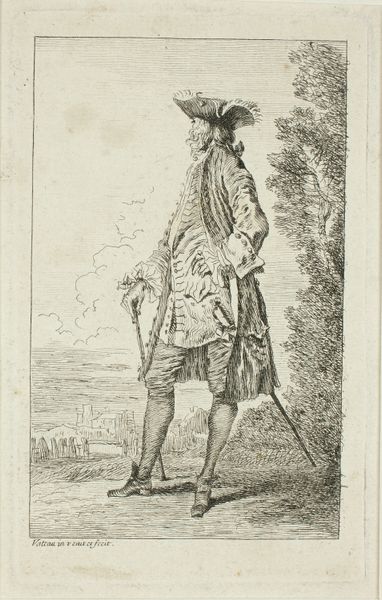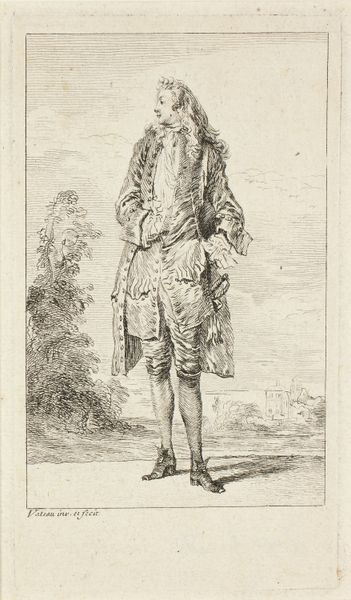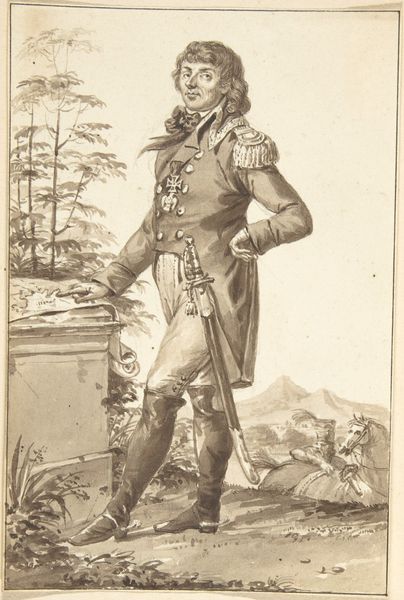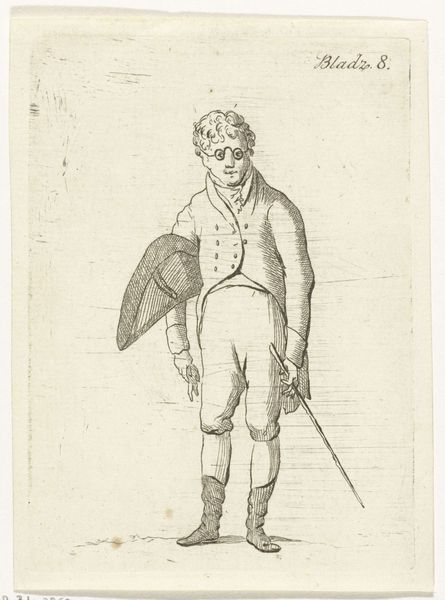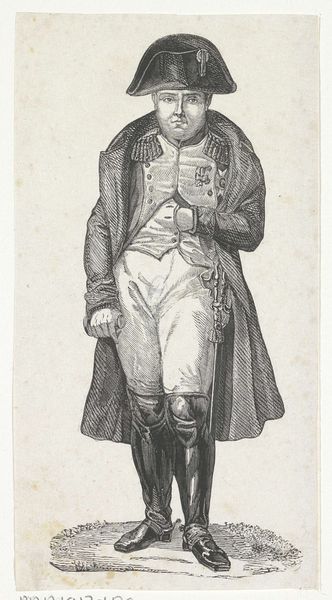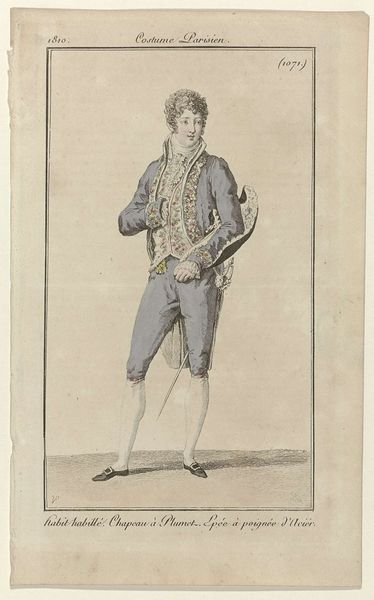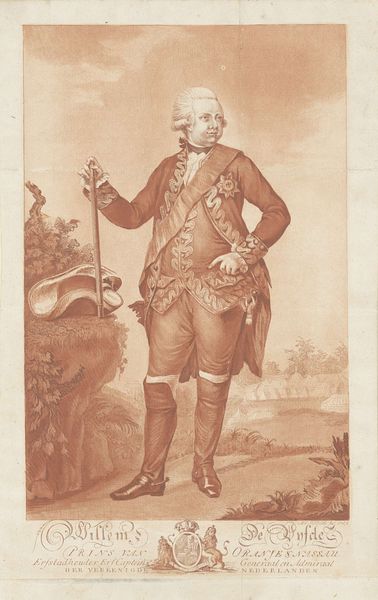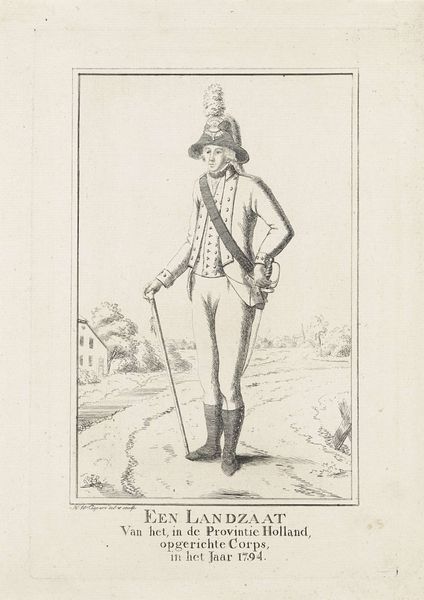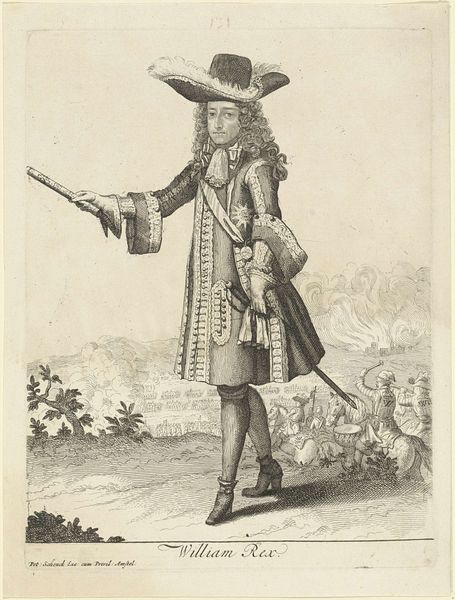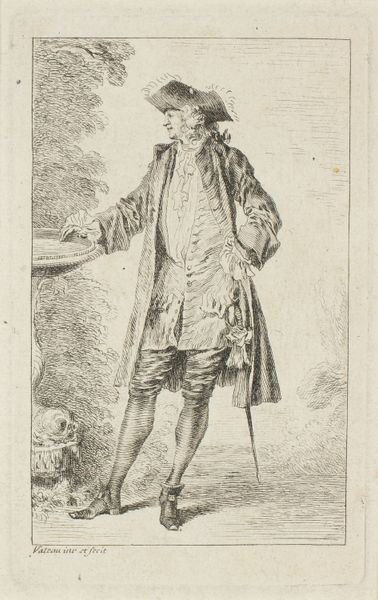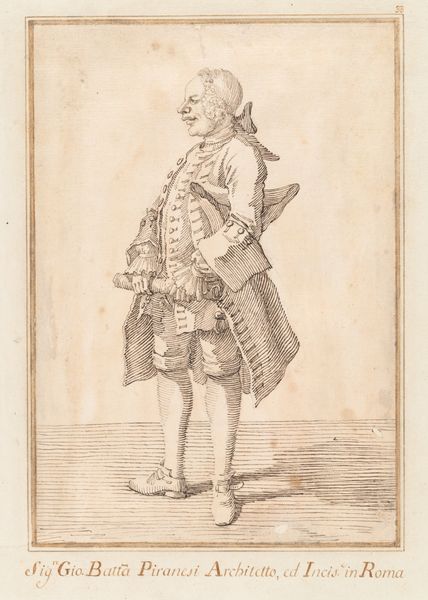
Portrait of Antonio Botta-Adorno 1780 - 1827
0:00
0:00
drawing, ink
#
portrait
#
drawing
#
landscape
#
ink
#
cityscape
#
history-painting
#
academic-art
Dimensions: 6 5/8 x 4 1/2in. (16.8 x 11.4cm)
Copyright: Public Domain
Editor: Here we have Jean-Baptiste-François Bosio’s "Portrait of Antonio Botta-Adorno," dating between 1780 and 1827. It's an ink drawing with such incredible detail. It really evokes the pomp and circumstance of the era. What strikes you most about it? Curator: Immediately, I'm drawn to the details of the garment itself and its position in representing power structures and high social status, from its construction and the specific materials used, to the social labor involved in its making. Bosio really highlights a system of production and consumption. What do you observe? Editor: I hadn’t thought of it that way, seeing the clothes as more than just details, but representations of a system. So the choice of this style is as important as his choice of pose? Curator: Absolutely. Think of the material's origins, its trade routes. Was it locally produced, or an import signaling global connections? The ink, too – what kind was it, who produced it, and how does its quality speak to the commissioning context? Even the paper contributes: is it rag paper or something else and what implications can that reading infer? Editor: That gives me so much to think about. Seeing it as an intersection of material histories changes everything. Is there something the cityscape behind reveals from a materialistic perspective? Curator: Perhaps think of how labor enabled that built environment? It, too, signals wealth and power in terms of land control and military power which required raw resources. Also consider who may have benefited and at whose expense. Editor: This has completely transformed my understanding of the piece! Curator: Precisely! Seeing art through a materialist lens reveals hidden histories and power dynamics often overlooked.
Comments
No comments
Be the first to comment and join the conversation on the ultimate creative platform.
